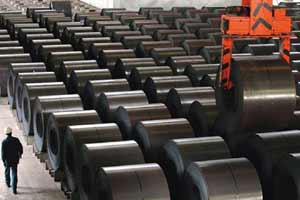The output of core sector industries shrank by 0.1% in March — a 17-month low — due to negative growth in production of finished steel, cement, natural gas and refinery items, increasing worries over the pace of industrial recovery. For the full 2014-15 fiscal, output slowed to 3.5% from 4.2% in the previous financial year.
Eight core-sector industries have a combined weight of 38% in the Index of Industrial Production (IIP). In March last year, the core sector growth was 4%. The previous low was a negative growth of 0.6% in October 2013.
When core sector output grew at 1.4% in February, analysts had predicted that the last-quarter GDP growth could be a bit less than the 7.4% officially estimated.
Industrial production growth had scaled a three-month peak of 5% in February, beating analysts’ expectations of a slowdown for a third straight month, as manufacturing recorded its best performance since May 2014 and consumer goods output hit its loftiest in 27 months. Favourable bases helped the expansion of both manufacturing and the overall IIP in February (the latter had contracted 2% a year earlier).
Thursday’s data show natural gas production had declined by 1.5 % in March, while petroleum refinery output contracted by 1.3 %.
Steel production declined by 4.4%, while cement output dropped 4.2% in March.
Thanks to the measures taken by the government including the fuel supply agreements between Coal India and its buyers, coal production jumped 6% in March.
The growth in coal production was better in February at 11.6% compared with 1.7% in January. Crude oil production and electricity generation increased by 1.7 % each in March.
In April-March last fiscal the cumulative growth for the core sector was 3.5 %, lower than 4.2% in 2013-14. The latest data indicate that industry growth has not stabilised. The government’s advance estimate for the GDP growth for FY15 is 7.4%. The economy grew by 6.5% in Q1, 8.2% in Q2 and 7.5% in Q3, which implies to meet the estimate for the full year, the growth in the last quarter should be 7.4%.
With retail inflation staying below 6% since September, the latest data also give the Reserve Bank of India more leeway to hold rates and nudge more banks to cut lending rates in sync with the central bank’s lowering of the repo rate.
For Updates Check Economy News; follow us on Facebook and Twitter
